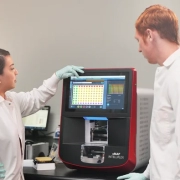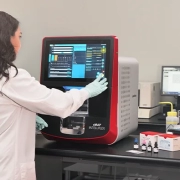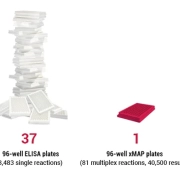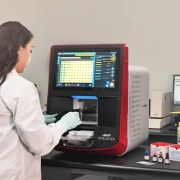3 New Studies Show How xMAP INTELLIFLEX® Delivers Double the Data
Get two results per analyte with our new dual reporter feature
In the newest generation of our xMAP® Technology, the xMAP INTELLIFLEX® DR-SE System, we’ve added more than a few exciting features, including the unique dual reporter functionality powered by a second reporter laser. Designed to increase data output while using less sample, this new feature allows users to collect double the amount of data for each analyte in a multiplex study.
To show how this capability could make a difference in various applications, we’ve recently published a tech note detailing three studies conducted on the INTELLIFLEX DR-SE System. Each study includes detailed protocols, materials used, and results, enabling scientists to integrate these methods into their own research.
Versatility of the dual reporter
In the first study, we evaluated the dual reporter functionality using an xTAG® oligo hybridization assay. We studied different pairs of reporter dyes in various hybridization buffers to determine if two dyes that bind to different oligo targets on different bead sets can be used in a single reaction without interference. Overall, the data shows that the dual reporter function of the INTELLIFLEX DR-SE System can be used successfully for detecting oligo targets captured onto separate bead regions without any interference between the different dyes and the reporter channels.
For the second study, we ran an antibody isotyping assay for SARS-CoV-2 with several pairs of commercially available reporter dyes to simultaneously measure IgG and IgM in the same well. Results showed that the dual reporter function can be successfully used for detecting different protein molecules (i.e., two antibody isotypes) on the same bead without interference between the dyes and the reporter channels.
The third study was designed to test the dual reporter channels using a DNA hybridization assay to determine if two dyes that bind to the same target on the same bead set can be used in a single reaction. We used a 55-nucleotide oligo target in a no-wash hybridization assay with 1X xTAG® hybridization buffer. There was no effect or interference on signal output when both dyes were bound to the same molecule on the same bead.
But wait, there’s more
The addition of the dual reporter feature is an exciting development in xMAP Technology, and we can’t wait to see the ways it’s applied to advance your research. Other new INTELLIFLEX features include an integrated PC and touchscreen with a compact design to minimize footprint, an increased dynamic range, new intuitive software, and more.
If you’d like to learn more about the new features in the INTELLIFLEX platform, check out the other available technical documents here.
For Research Use Only. Not for use in diagnostic procedures.
Related Content
- Meet xMAP INTELLIFLEX®! A First Look at the Newest xMAP® Technology Platform [Blog]
- xMAP INTELLIFLEX® Systems [Webpage]
- Why Researchers Love xMAP® Technology [Blog]
- The Versatility of Multiplex Antibody Titer Assays for COVID-19 and Beyond [Blog]
- Browse 1,200+ Partner Kits with xMAP® Kit Finder [Online Tool]


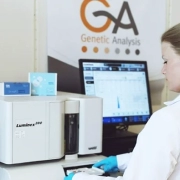



 Technology you trust. Versatility you want.
Technology you trust. Versatility you want.
 The Luminex team in our headquarters in Austin packs up the first INTELLIFLEX system to head to its new laboratory.
The Luminex team in our headquarters in Austin packs up the first INTELLIFLEX system to head to its new laboratory. Luminex team members Rob Wilkens and Wilco de Jager install the first INTELLIFLEX system at NMI.
Luminex team members Rob Wilkens and Wilco de Jager install the first INTELLIFLEX system at NMI.
